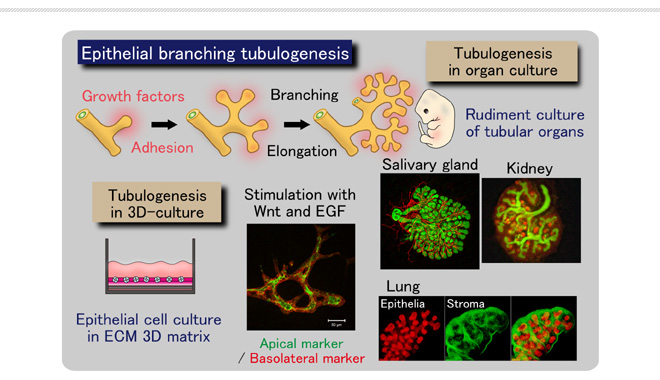|
HOME > Programmed research projects > Programmed research project 03
 Programmed research project 03Moleuclar mechanism for the formation and maintenance of epithelial tubulogenesis with branching
Purpose of the Research ProjectThe principle structure of epithelial tubules in tissues is regulated by cellular polarization and depolarization. Epithelial tubules form lumen by establishing apical-basal polarization and extend their surface by branching morphogenesis. Although understanding of cellular functions at the molecular level has been deepened, the molecular mechanism of the formation of epithelial tubules remains to be clarified. In this study, we try to clarify the mechanism how epithelial tubules are formed by humoral factors and extracellular matrix-mediated cell adhesion in the context of cellular polarization. Although there is diversity among tissues in the function and structure, we would like to identify the common and different mechanism in epithelial tubule formation from various tissues by focusing on collective cell elongation, branching and polarization. Content of the Research ProjectTo accomplish our aim above, we will try to clarify following points; Expected Research Achievements and Scientific SignificanceAlthough researches on the formation of central nervous and blood vascular systems, which also show tubular structures, have been progressing, this groundbreaking study on epithelial tubular systems has just begun. Progress in this new research area would contribute to understanding of functional relationship between epithelial tissues and other tissues. It is also expected to contribute to understanding of the formation of central nervous and blood vessel systems. In addition, research achievement in this project would be useful for establishing regenerative medicine in next generation, which will be performed on the basis of further understanding of tissue conformation, and for developing novel therapeutic agents for diseases, including cancer.
|








